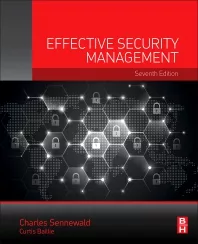Could Wearables and Big Data Mitigate Workplace Violence?
One promising technology for predicting violent outbreaks is wearables and big data.


W. Barry Nixon
One of the most frequently asked question after a workplace violence incident has occurred is how could it have been prevented from occurring? Most experts have relied heavily on the “early warning signs,” which are behaviors and events that historically have preceded incidents of violence. These behaviors and events are based on research that tracked multiple incidents over the years. Some examples of behaviors typically included in the “early warning signs” include acting in an unusually bizarre manner, overly aggressive or angry response to regular situations, paranoia, psychotic episodes (hearing voices, hallucinations or delusions), overly controlling, power obsessions, drastic change in behavior, etc., to name a few.
The general approach is to teach supervisors and employees to know what the signs are and to report them to management or human resources if they observe someone acting is this manner. One of the challenges of this approach is that the observance of the behavior is in “the eye of the beholder,” meaning it is not only subjective, but open to wide interpretations. Most experts will say it’s better to err on the side of caution and if you “think” the behavior fits the model report it. While this is certainly true, the problem is that the vast majority of employees are reluctant to report someone based on what they perceive to be a “guess” or simple conjecture. This is why after an incident occurs we typically learn about many different behaviors that fit into the “early warning signs,” but they were not noticed, taken seriously or reported. The other challenge with the “early warning” approach is that supervisors and employees are taught that it’s not just when you observe one sign, it’s when there is an accumulation of the signs over time. The obvious challenge with this approach is that it requires a vague conclusion about how many signs must be observed over what time period for it to reach the level worthy of reporting?
Beyond the challenge of teaching supervisor and employees to be trained observers of the early warning signs, one of the biggest issues is that the signs are historically focused; and while they provide insightful information they are not predictive of an incident occurring.
The emergence of predictive analytics has the promise of providing another tool which can help to identify the potential for violence to occur and its focus is prediction. We have seen the application of predictive policing, which is still in its infancy, and perhaps one day organizations will be able to deploy a similar technology as the field matures.
The other promising technology that may be able to help with predicting violent outbreaks is wearables and big data which are already upending how athletic performance is measured and analyzed. Is it possible that this emerging capability which can analyze a person’s behavior patterns could be the Holy Grail for predicting violence behavior we have all been wishing for?
This entire article is based on the concepts identified in the article “How Data Will Disrupt Talent Management,” by Himanshu Tambe and Brian Payne. I have adapted their concept and applied it to threat assessment.
Consider the following. A new generation of personal and environmental technologies can collect unprecedented levels of information about individual’s social and emotional states at work. Watches, headbands and rings detect physiological data such as heart rate, skin temperature and brain waves to accurately read a person’s mood.
But what does this have to do with threat assessment? Accenture research suggests that data from sensors can paint a vivid picture using input about emotions, stress levels, relationships, performance, productivity and collaboration patterns. This information could be used as the basis for identifying when an individual is approaching a predefined stress tipping point in their behavior that signals a problem is about to occur.
Data can be collected on individuals and provided back to them in real time or a trained observer. This field is called auto analytics. It is already popular in sports, where teams use heart rate and other biometric feedback to make real-time decisions about the players on the field. Consumers are enthusiastically embracing auto analytics to gauge how factors like mood, sleep and exercise are influencing physical and mental performance. Now, the technology is entering the workplace.
One example is real-time feedback tools that highlight use of positive and negative words in conversation.
With a reservoir of accurate data, an organization can experiment with interventions to boost the accuracy of threat assessments. This includes using intelligent machines to predict emotions and behaviors. These insights could help guide interventions.
Machines can also use analytics and cognitive computing to teach people how to improve their social skills or more accurately read other people’s emotions.
Perhaps the most sophisticated use of technology – and also the most intrusive – involves changing people’s social and emotional behaviors in real time. Yes, we are talking about mood-altering interventions. Technology with GPS functionality might suggest to an employee when they have had a negative interaction with someone an appropriate way to ease the tension in the situation.
Just imagine being able to receive an alert when an employee reaches a stress tipping point. The employee could receive immediate “computer generated” input focused on reducing their stress level, notification that they will be receiving a call from the company’s EAP representative in one minute, and that their supervisor has been notified that the employee will be taking a company-approved break immediately.
The monitored workplace is already evident in areas such as logistics or call centers – and is spreading rapidly. As organizations start to develop a strong analytics capability and learn what to do with all the data collected by smart sensors, they can move to the next level: using more sophisticated analytics capabilities to predict the social and emotional effect on behavior at work.
Admittedly, there are numerous issues and concerns about the emerging field of auto analytics, but there is also promise that we may be getting closer to being able to actually analyze human behavior to predict violence before it occurs. This may seem like a pipe dream, but rest assured it’s not science fiction, but more so an emerging reality.
Note: A version of this article was originally published in the July edition of The Workplace Violence Prevention eReport. It is based on the article “Data Disruption,” which appeared in Talent Management magazine, at http://www.talentmgt-digital.com/read-tm/may_june_2016?folio=10&pg=9#pg9
Looking for a reprint of this article?
From high-res PDFs to custom plaques, order your copy today!







